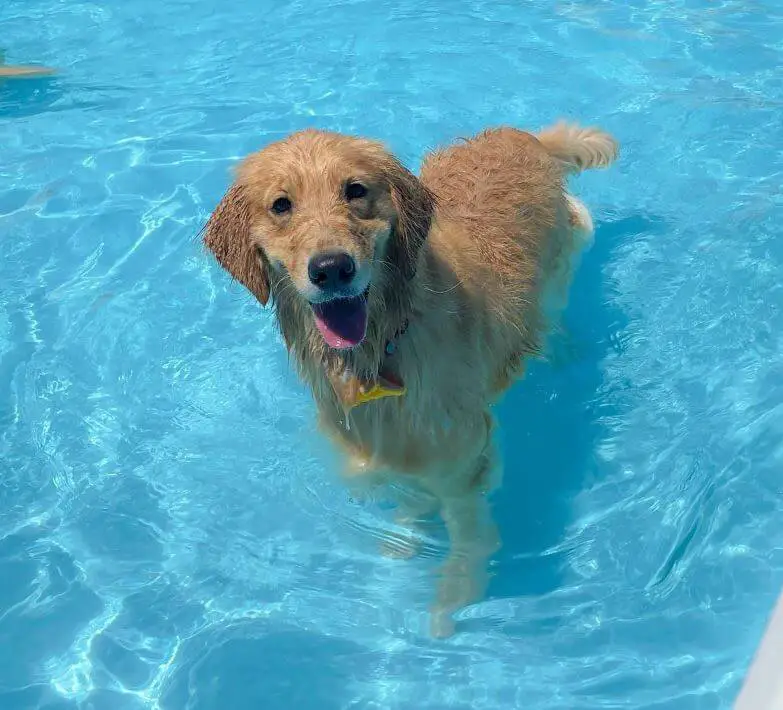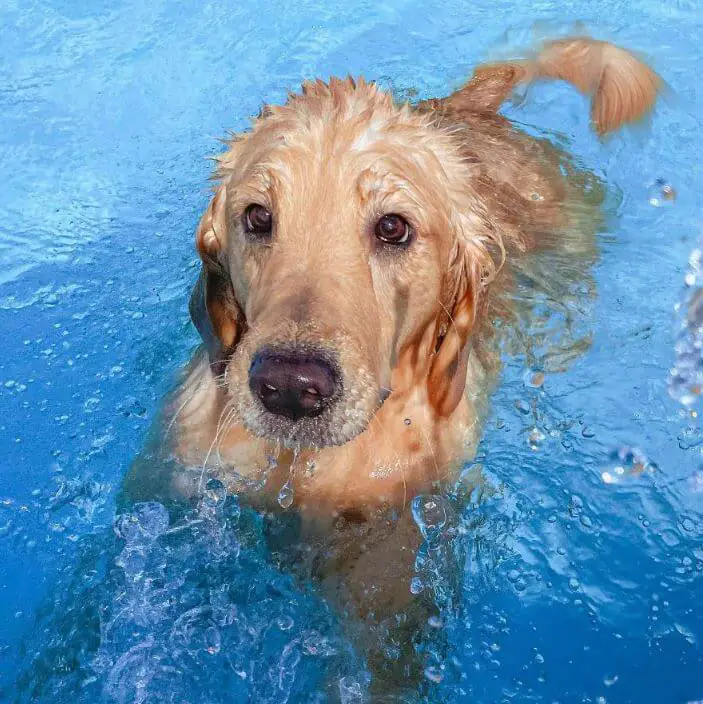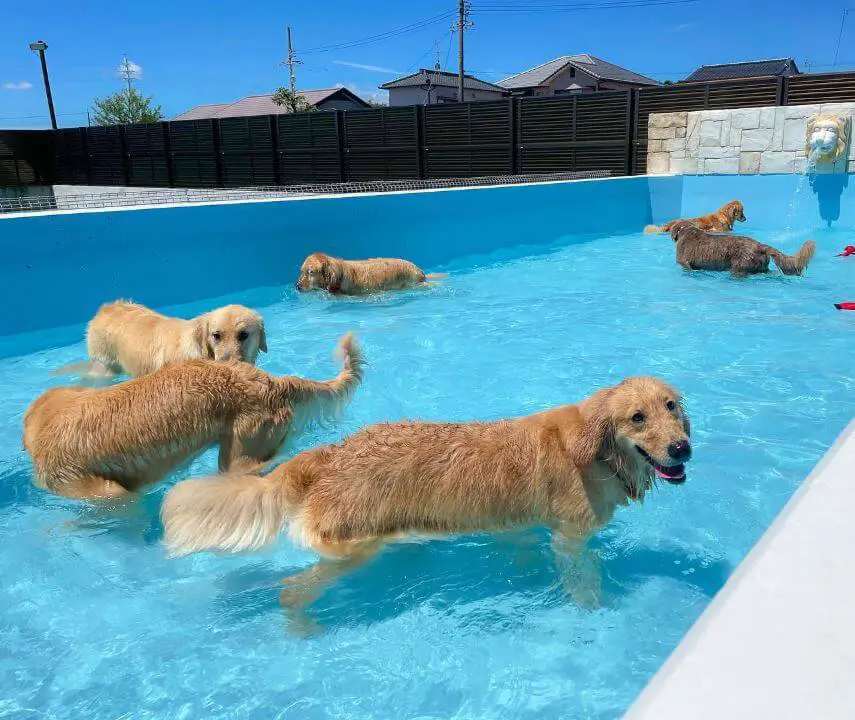As the weather warms up, many dog owners look forward to taking a dip in the pool to cool off, and they may wonder whether their furry friends can join them. While swimming can be an enjoyable and beneficial activity for dogs, it’s essential to consider the safety and potential risks when allowing them to swim in chlorine pools. In this article, we’ll explore whether dogs can safely swim in chlorine pools and provide important precautions to ensure their well-being.

Can Dogs Swim in Chlorine Pools?
Yes, dogs can swim in chlorine pools, but several factors need to be considered to ensure their safety and health:
- Chlorine Levels: The chlorine levels in the pool water must be within a safe range. High chlorine levels can irritate a dog’s skin, eyes, and respiratory system. It’s essential to regularly test and maintain the pool’s water chemistry to ensure it’s safe for both humans and dogs.
- Rinse After Swimming: After your dog swims in the pool, it’s crucial to rinse them thoroughly with clean, freshwater. This helps remove chlorine or other chemicals from their fur to prevent skin irritation or ingestion when they lick themselves.
- Supervision: Always supervise your dog while they are in or around the pool. Accidents can happen, and not all dogs are strong swimmers. Be prepared to assist and rescue your dog if needed.
- Exit Access: Ensure your pool has a safe and accessible exit point for your dog to easily get out of the water. Pool ramps or stairs designed for dogs can be helpful.
- Water Consumption: Discourage your dog from drinking pool water. Chlorine and other pool chemicals can be harmful when ingested.
- Ear Care: After swimming, clean your dog’s ears to prevent ear infections, as moisture from swimming can contribute to ear issues.

Precautions for Safe Pool Time with Your Dog:
- Training: Not all dogs are natural swimmers. If your dog is new to swimming, introduce them gradually and provide them with a positive and supportive experience. Consider using a doggy life jacket for added safety, especially for breeds not known for their swimming abilities.
- Health Check: Ensure your dog is in good health and physically capable of swimming. Older dogs or those with medical conditions may not be suitable for strenuous swimming.
- Sun Protection: Just like humans, dogs can get sunburned. Provide shade or use pet-friendly sunscreen on areas with thin fur or exposed skin.
- Hydration: Keep fresh water available for your dog to drink and encourage them to stay hydrated, especially on hot days.
- Potty Breaks: Take your dog for a bathroom break before swimming to minimize accidents in the pool.

Swimming can be an enjoyable and refreshing activity for dogs, but it’s essential to prioritize their safety and well-being when allowing them to swim in chlorine pools. By ensuring proper water chemistry, supervising your dog, and following precautions, you can create a safe and enjoyable swimming experience for your furry friend. Remember that not all dogs are natural swimmers, so always consider your dog’s individual abilities and needs when introducing them to pool time fun.
